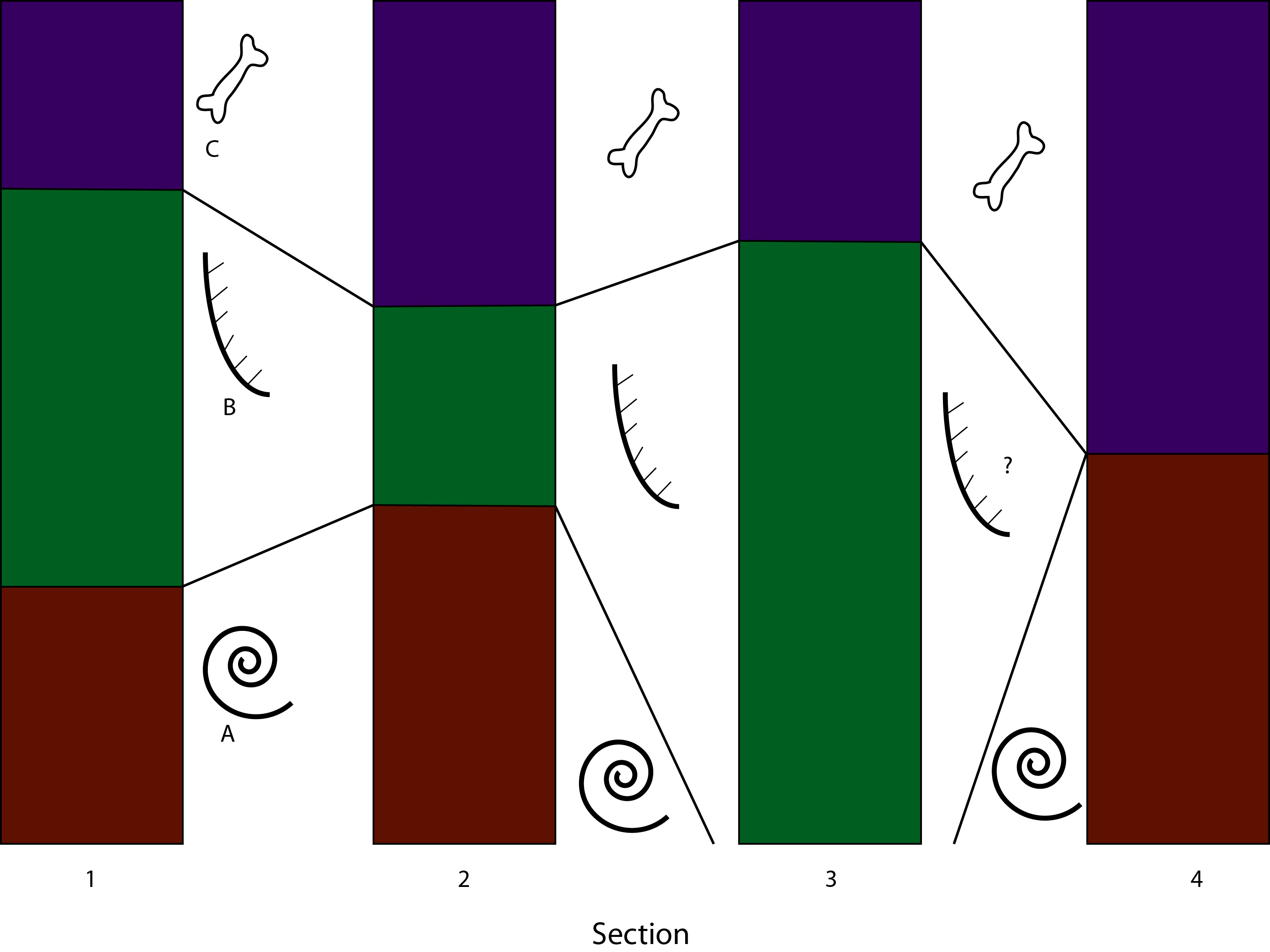Brevis: What on Earth is Palaeontology?
These brevia (using Latin so you can feel even better about reading this blog!) will be a series of short pieces about important or relevant topics that are not the main focus of my work. As you can see from the title, this will include topics such as a description of palaeontological study and, in the future, a history of study. The idea is that, writing a shorter article should keep me should keep me going on the writing front. I’m sure you will have noticed, as I have, that my posting hasn’t been as regular as I had hoped, so this should somewhat alleviate that.
Palaeontology (US paleontology; PAL-ee-on-TOL-oh-jee) is the study of ancient life on Earth. The name derives from the Greek παλαιός, ὂν and λόγος meaning “study of ancient beings” (OED; Wikipedia). Modern palaeontology covers a huge range of topics from dinosaurs and ichthyosaurs through the traces left by animals and bacteria to the evolution of the biosphere itself. Over the past three centuries, this science has evolved as much as the organisms it studies — expect a history in the next brevis.
Modern palaeontology has many fronts and uses. The main ones, globally and from my point of view, include vertebrate palaeontology, biostratigraphy and palaeoclimatology.
Vertebrate Palaeontology
This is possibly the smallest use of palaeontology, yet has the greatest public exposure. This is largely thanks to the spectacular fossils that vertebrates produce, but also to their appearances in popular culture — e.g. Jurassic Park. Of course, the most famous prehistoric animals, of any type, are the dinosaurs. These magnificent grace many musea floors as well as children’s (and in my case, young adult’s) walls and windowsills. Many people have had many suggestions as to why dinosaurs are so popular. I’ve heard it said that they represent another position of authority to respect, although annoy and rebel against seems more opt!
Vertebrate palaeontology covers much more than dinosaurs, and ichthyosaurs. There were many fish, reptiles and amphibians before and since, and many mammals followed after the dinosaurs’ extinction. Although these are less often seen, they are as, or more, fascinating, particularly in the variety of weird forms that they had. To give some examples, some early land vertebrates, from ~350 Ma had up to eight toes (Hynerpeton); fish developed heads with inch-thick armour (Dunkleosteus) and others evolved jaws over two metres long (Stretosaurus)!
Biostratigraphy
Stratigraphy is one of the basic tools of geology. Is uses the relationship of the rocks in one place to discover the history of another. The bio- part in this comes when fossils are used to assist this. Imagine having a section of rock that contains the fossils A, B and C sequentially, one above the other. If you then go to another section and find fossil A only, you can line up the sequences. If you find B and C only, you can again correlate them.
The interesting part comes when you find a sequence with only fossils A and C. Many things can cause this:
- Fossil B did not live there because of e.g. the environment.
- The rock with Fossil B in was not deposited there.
- The rock with Fossil B was deposited, but eroded before the rock with Fossil C was deposited — an unconformity.

When working in the real world, stratigraphy is much more complicated than flat beds overlying each other. The beds are tilted, overlap and phase in and out. The fossils can also be found at different levels, overlapping and in particular assemblages. The mix of these defines recognised Biostratigraphical Zones (biozones for short). Fossils used include the coiled ammonites, fossil pollen and spores and enigmatic creatures called graptolites that became extinct ~250 Ma. As a tool, biostratigraphy is essential in the oil industry for locating and following possible reservoirs.
Palaeoclimatology
Although fossils are not (directly) the most often used evidence for investigating the past climate, which usually falls to isotope analysis, they provide an important key to corroborating this. Many fossils provide the raw materials for finding the isotopes in the first place.
An oyster, 150 Ma, made its shell out of calcite, a mineral of calcium carbonate. The calcite was recrystallised from the ions in the sea. Therefore, the shell represents the (partial) composition of the sea at the time the shell formed. Many things, including temperature and the size of the ice caps, can affect the sea’s composition, particularly of isotopes. So looking at the isotopes in this oyster’s shell can allow you to infer the climate 150 Ma.
More directly, fossils can show different climatic regions (~biomes). By looking at relations and adaptations of modern equivalents it is possible to infer that e.g. this species A, like the tropical species X, lived in the tropics, thus place Y, where it was found, was probably tropical. This works even better when you find the same species or genus indifferent places — e.g. Hippopotamus fossils have been found in the Thames. This is good evidence that the Thames, at one time, was warmer than it is today — possibly as warm as sub-Saharan Africa is today!
Conclusion
This is only meant to be an introduction into some aspects of palaeontology that are commonly employed today. There are many more parts that can surely be mentioned at some later date; assuming that I get my act together and start writing regular, eloquently, concisely… I hope that you are looking forward to them as much as I am.

Leave a comment